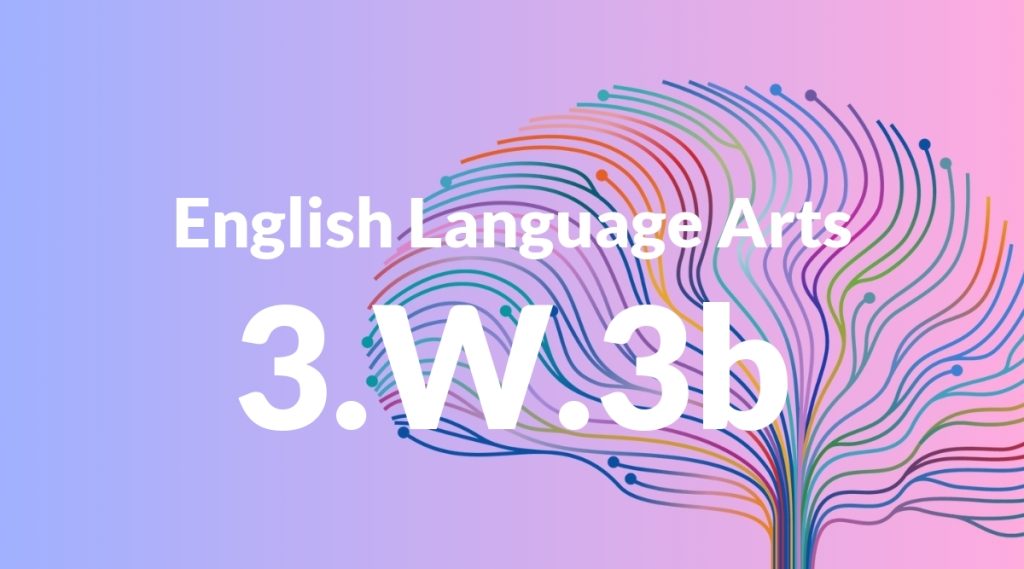Standard: 3.W.3b – Use dialogue and descriptions of actions, thoughts, and feelings to develop experiences and events or show the response of characters to situations.
Grade level: Grade 3
Subject: English Language Arts
Domain: Writing
Teacher Overview
This standard focuses on using dialogue and descriptions to develop characters and events in a story. It’s important because it helps students create more engaging and dynamic narratives, which are essential skills in both writing and reading comprehension. Students should have a basic understanding of sentence structure, punctuation, and narrative writing. They should also know how to identify characters and basic story elements.
Students will be able to write more complex and engaging stories with well-developed characters. They will also be better equipped to analyze character development in literature.
Common Misconception 1
Some students may think that dialogue alone is sufficient to show a character’s thoughts and feelings. This is incorrect because a well-rounded character is developed through a combination of dialogue, actions, and thoughts.
Intervention 1
Use writing prompts that require students to include dialogue, actions, and thoughts in their narratives. Provide examples from mentor texts that demonstrate this balance.
Common Misconception 2
Students may undervalue the role of actions in character development, believing dialogue is more important. This is incorrect because actions often reveal deeper insights into a character’s motivations and emotions.
Intervention 2
Showcase mentor texts where actions play a crucial role in character development. Encourage students to write scenes focusing on what characters do, not just what they say.
Prerequisite Knowledge
Students should have a basic understanding of sentence structure, punctuation, and the ability to write simple narratives. They should also be familiar with the concept of characters and basic story elements such as setting and plot.
Subsequent Knowledge
After mastering this standard, students will be able to create more complex narratives with well-developed characters. They will also be able to analyze and critique character development in various forms of literature.
Instructional Activities
- Write a short story focusing on a character’s dialogue and actions.
- Create comic strips with characters’ speech bubbles and actions.
- Role-play different scenarios to understand character responses.
- Analyze characters in favorite books or movies.
- Write diary entries from a character’s perspective.




